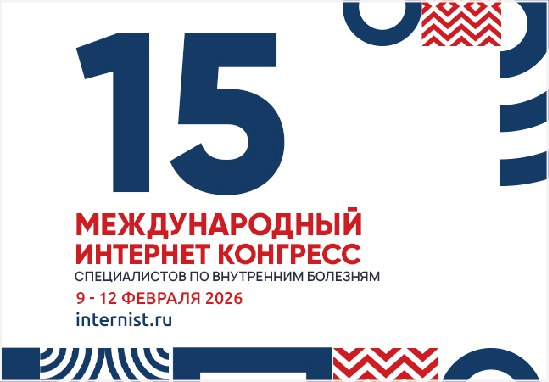ЧАСТОТА ДИАГНОСТИКИ АТЕРОСКЛЕРОТИЧЕСКОГО ПОРАЖЕНИЯ НЕСКОЛЬКИХ СОСУДИСТЫХ БАССЕЙНОВ В РАЗЛИЧНЫХ ВОЗРАСТНЫХ ГРУППАХ
https://doi.org/10.15829/1728-8800-2013-2-63-69
Аннотация
Цель. Изучение частоты выявления субклинических атеросклеротических изменений в нескольких артериальных бассейнах и фак- торов, влияющих на их распространенность в различных возрастных группах (гр.) у больных клиники сердечно-сосудистой хирургии.
Материал и методы. В исследование включены 1018 пациентов: 825 мужчин и 193 женщин, средний возраст 59,0±12,0 лет, в период подготовки к плановым вмешательствам на коронарных артериях (КА) и других артериальных бассейнах. Выделены 4 гр.: I гр. — больные < 60 лет (n=542), II гр. — 60–64 лет (n=215), III гр. — 65–69 лет (n=141), IV гр. — больные ≥ 70 лет (n=120). Коронароангиография и допплеровское ультразвуковое исследование экстракраниальных артерий проводились всем пациентам, при необходимости — ангиография периферических артерий. Критерием мультифокального атеросклероза (МФА) было наличие стенозов ≥30% или операции реваскуляризации в ≥2 сосудистых бассейнах.
Результаты. Субклинические атеросклеротические поражения в различных сосудистых бассейнах выявлены у 52,3% пациентов. С возрастом частота определения МФА возрастала с 45,8% в I гр. до 58,6% — во II, 58,2% — в III и 63,3% — в IV гр. (р=0,0001). Если в I гр. наличие МФА ассоциировалось с синдромом перемежающейся хромоты (СПХ), снижением индекса массы тела (ИМТ), увеличением толщины комплекса интима-медиа (ТКИМ) и уровня общего холестерина (ОХС), то у больных II–IV гр. — только с СПХ.
Заключение. При учете субклинических (гемодинамически незначимых) поражений в артериальных бассейнах выявлено увеличение числа больных с МФА. Увеличение возраста ассоциировалось с МФА. Факторами, связанными с МФА, были увеличение ТКИМ и уровня ОХС, наличие СПХ и снижение ИМТ.
Об авторах
А. Н. СуминРоссия
д. м.н., и. о. заведующего отделом мультифокального атеросклероза, заведующий лабораторией патологии кровообращения
Тел.: (3842) 64–44–61; факс: (3842) 64–27–18
Р. А. Гайфулин
Россия
к. м.н., н. с. лаборатории интервенционных методов диагностики и лечения
А. В. Безденежных
Россия
н. с. лаборатории патологии кровообращения
Е. В. Корок
Россия
н. с. лаборатории патологии кровообращения
А. В. Карпович
Россия
м. н.с. лаборатории патологии кровообращения
С. В. Иванов
Россия
д. м.н., заведующий лабораторией реконструктивной хирургии
О. Л. Барбараш
Россия
д. м.н., профессор, директор
Л. С. Барбараш Л. С.
Россия
академик РАМН, главный научный сотрудник
Список литературы
1. Steg PG, Bhatt DL, Wilson PW, et al.; REACH Registry Investigators. One-year cardiovascular event rates in outpatients with atherothrombosis. JAMA 2007; 297 (11): 1197–206.
2. Suárez C, Zeymer U, Limbourg T, et al.; REACH Registry Investigators. Influence of polyvascular disease on cardiovascular event rates. Insights from the REACH Registry. Vasc Med 2010; 15 (4): 259–65.
3. Bhatt DL, Eagle KA, Ohman EM, et al.; REACH Registry Investigators. Comparative determinants of 4-year cardiovascular event rates in stable outpatients at risk of or with atherothrombosis. JAMA 2010; 304 (12): 1350–7.
4. Panchenko EP, at the request of participants of the register REACH in the Russian Federation. The results of the three-year monitoring of outpatients with symptomatic atherothrombosis (the analysis of the Russian population of the register REACH). Kardiologija 2009; 10: 9–15. Russian (Панченко ЕП., по поручению участников регистра REACH в РФ. Результаты трехлетнего наблюдения за амбулаторными больными с клиническими проявлени- ями атеротромбоза (анализ российской популяции регистра REACH). Кардиология 2009; 10: 9–15).
5. Singh M, Lennon RJ, Darbar D, et al. Effect of Peripheral Arterial Disease in Patients Undergoing Percutaneous Coronary Intervention With Intracoronary Stents. Mayo Clin Proc 2004; 79 (9): 1113–8.
6. Aboyans V, Lacroix P, Postil A, et al. Subclinical peripheral arterial disease and incompressible ankle arteries are both long-term prognostic factors in patients undergoing coronary artery bypass grafting. JACC 2005; 46 (5): 815–20.
7. Collison T, Smith JM, Engel AM. Peripheral vascular disease and outcomes following coronary artery bypass graft surgery. Arch Surg 2006; 141 (12): 1214–8.
8. Sen S, Lynch DR Jr, Kaltsas E, et al. Association of asymptomatic peripheral arterial disease with vascular events in patients with stroke or transient ischemic attack. Stroke 2009; 40 (11): 3472–7.
9. Pipitone S, Corrado E, Muratori I, et al. Extracoronary atherosclerosis in patients with chronic ischemic heart disease: relationship with risk factors and the severity of coronary artery disease. Int Angiol 2007; 26 (4): 346–52.
10. Kablak-Ziembicka A, Przewlocki T, Tracz W, et al. Diagnostic value of carotid intima-media thickness in indicating multi-level atherosclerosis. Atherosclerosis 2007; 193 (2): 395–400.
11. Przewłocki T, Kabłak-Ziembicka A, Kozanecki A, et al. Polyvascular extracoronary atherosclerotic disease in patients with coronary artery disease. Kardiol Pol 2009; 67 (8A): 978–84.
12. Kablak-Ziembicka A, Przewlocki T, Pieniazek P, et al. The role of carotid intima-media thickness assessment in cardiovascular risk evaluation in patients with polyvascular atherosclerosis. Atherosclerosis 2010; 209 (1): 125–30.
13. van Kuijk JP, Flu WJ, Welten GM, et al. Long-term prognosis of patients with peripheral arterial disease with or without polyvascular atherosclerotic disease. Eur Heart J 2010; 31 (8): 992–9.
14. Barbarash LS, Kashtalap VV, Zykov MV, et al. The prevalence and clinical significance of multifocal atherosclerosis in patients with STEMI. Kardiologija i serdechno-sosudistaja hirurgija 2010; 5: 31–6. Russian (Барбараш ЛС, Кашталап ВВ, Зыков МВ. и др. Распространенность и клиническая зна- чимость мультифокального атеросклероза у пациентов c инфарктом миокарда c подъемом сегмента ST. Кардиология и сердечно-сосудистая хирургия 2010; 5: 31–6).
15. Barbarash LS, Shafranskaya KS, Ivanov SV, et al. The ability to use a modified scale EUROSCORE to assess the annual forecast of coronary bypass grafting in patients with multifocal atherosclerosis. Patologija krovoobrashhenija i kardiohirurgija 2010; 2: 52–6. Russian (Барбараш ЛС, Шафранская КС, Иванов СВ. и др. Возможность использования модифицированной шкалы EUROSCORE для оценки годового прогноза коронарного шунтирования у пациентов с мультифокальным атеросклерозом. Патология кровообра- щения и кардиохирургия 2010; 2: 52–6).
16. Levey AS, Bosch JP, Lewis JB, et al. A more accurate method toestimate glomerular filtration rate from serum creatinine: a new prediction equation. Modification of Diet in Renal Disease Study Group. Ann Intern Med 1999; 130: 461–70.
17. Bhatt DL, Steg PG, Ohman EM, et al.; REACH Registry Investigators. International prevalence, recognition, and treatment of cardiovascular risk factors in outpatients with atherothrombosis. JAMA 2006; 295 (2): 180–9.
18. Meizels A, Zeitoun DM, Bataille V, et al.; ALLIANCE investigators. Impact of polyvascular disease on baseline characteristics, management and mortality in acute myocardial infarction. The Alliance project. Arch Cardiovasc Dis 2010; 103 (4): 207–14.
19. Song P, Seok JM, Kim WS, et al. Increased lipoprotein (a) is associated with polyvascular disease in patients undergoing coronary artery bypass graft. Atherosclerosis 2011; 219 (1): 285–90.
20. Drohomirecka A, Kołtowski Ł, Kwinecki P, et al. Risk factors for carotid artery disease in patients scheduled for coronary artery bypass grafting. Kardiologia Polska 2010; 68 (7): 789–94.
21. Diehm C, Schuster A, Allenberg JR, et al. High prevalence of peripheral arterial disease and co-morbidity in 6880 primary care patients: cross-sectional study. Atherosclerosis 2004; 172 (1): 95–105.
22. Lim S, Choi HJ, Shin H, et al. Subclinical atherosclerosis in a community-based elderly cohort: The Korean Longitudinal Study on Health and Aging. Int J Cardiol 2011 Jun 6. [Epub ahead of print].
23. Panchenko EP, Belenkov YuN. Characteristics and outcomes of atherothrombotic events in ambulatory patients in the Russian Federation (based on the international registry REACH). Kardiologija 2008, 2: 17–24. Russian (Панченко ЕП, Беленков ЮН. Характеристика и исходы атеро- тромбоза у амбулаторных больных в Российской Федерации (по мате- риалам международного регистра REACH). Кардиология 2008; 2: 17–24).
24. Rosengren A, Subramanian SV, Islam S, et al.; INTERHEART Investigators. Education and risk for acute myocardial infarction in 52 high, middle and low-income countries: INTERHEART case-control study. Heart 2009; 95 (24): 2014–22.
25. Salavecz G, Chandola T, Pikhart H, et al. Work stress and health in Western European and post-communist countries: an East-West comparison study. J Epidemiol Community Health 2010; 64 (1): 57–62.
26. Timóteo AT, Toste A, Araújo A, Ferreira RC. Expression of subclinical atherosclerosis for different cardiovascular risk factors in young populations. Rev Port Cardiol 2010;29 (7–8): 1181–90.
27. van Kuijk JP, Flu WJ, Galal W, et al. The influence of polyvascular disease on the obesity paradox in vascular surgery patients. J Vasc Surg 2011; 53 (2): 399–406.
28. Resnick HE, Lindsay RS, McDermott MM, et al. Relationship of high and low ankle brachial index to all-cause and cardiovascular disease mortality. The Strong Heart Study. Circulation 2004; 109: 733–9.
29. O’Hare AM, Katz R, Shlipak MG, et al. Mortality and cardiovascular risk across the ankle-arm index spectrum: results from the Cardiovascular Health Study. Circulation 2006; 113: 388–93.
30. Ovbiagele B. Association of ankle-brachial index level with stroke. J Neurol Sci 2009; 276 (1–2): 14–7.
31. Zheng L, Li J, Hu D, et al. Association of low ankle-brachial index with mortality in patients with ischemic heart disease. J Atheroscler Thromb 2010; 17 (7): 759–67.
32. Wikström J, Hansen T, Johansson L, et al. Ankle Brachial Index v0.9 Underestimates the Prevalence of Peripheral Artery Occlusive Disease Assessed with Whole-Body Magnetic Resonance Angiography in the Elderly. Acta Radiologica 2007; 49 (2): 143–9.
33. Xu D, Li J, Zou L, et al. Sensitivity and specificity of the ankle — brachial index to diagnose peripheral artery disease: a structured review. Vasc Med 2010; 15 (5): 361–9.
34. Yakubov S. Polyvascular atherosclerotic disease: recognizing the risks and managing the syndrome. Curr Med Res Opin 2009; 25 (11): 2631–41.
35. Brilakis ES, Hernandez AF, Dai D, et al. Quality of Care for Acute Coronary Syndrome Patients With Known Atherosclerotic Disease: Results From the Get With the Guidelines Program. Circulation 2009; 120: 560–7.
36. Cacoub PP, Zeymer U, Limbourg T, et al.; REACH Registry Investigators. Effects of adherence to guidelines for the control of major cardiovascular risk factors on outcomes in the REduction of Atherothrombosis for Continued Health (REACH) Registry Europe. Heart 2011; 97 (8): 660–7.
37. Nikolsky E, Mehran R, Mintz GS, et al. Impact of symptomatic peripheral arterial disease on 1-year mortality in patients undergoing percutaneous coronary interventions. J Endovasc Ther 2004; 11 (1): 60–70.
Рецензия
Для цитирования:
Сумин А.Н., Гайфулин Р.А., Безденежных А.В., Корок Е.В., Карпович А.В., Иванов С.В., Барбараш О.Л., Барбараш Л. С. Л.С. ЧАСТОТА ДИАГНОСТИКИ АТЕРОСКЛЕРОТИЧЕСКОГО ПОРАЖЕНИЯ НЕСКОЛЬКИХ СОСУДИСТЫХ БАССЕЙНОВ В РАЗЛИЧНЫХ ВОЗРАСТНЫХ ГРУППАХ. Кардиоваскулярная терапия и профилактика. 2013;12(2):63-69. https://doi.org/10.15829/1728-8800-2013-2-63-69
For citation:
Sumin A.N., Gaifullin R.A., Bezdenezhnykh A.V., Korok E.V., Karpovich A.V., Ivanov S.V., Barbarash O.L., Barbarash L.S. PREVALENCE OF MULTI-FOCAL ATHEROSCLEROTIC PATHOLOGY ACROSS AGE GROUPS. Cardiovascular Therapy and Prevention. 2013;12(2):63-69. (In Russ.) https://doi.org/10.15829/1728-8800-2013-2-63-69
























































